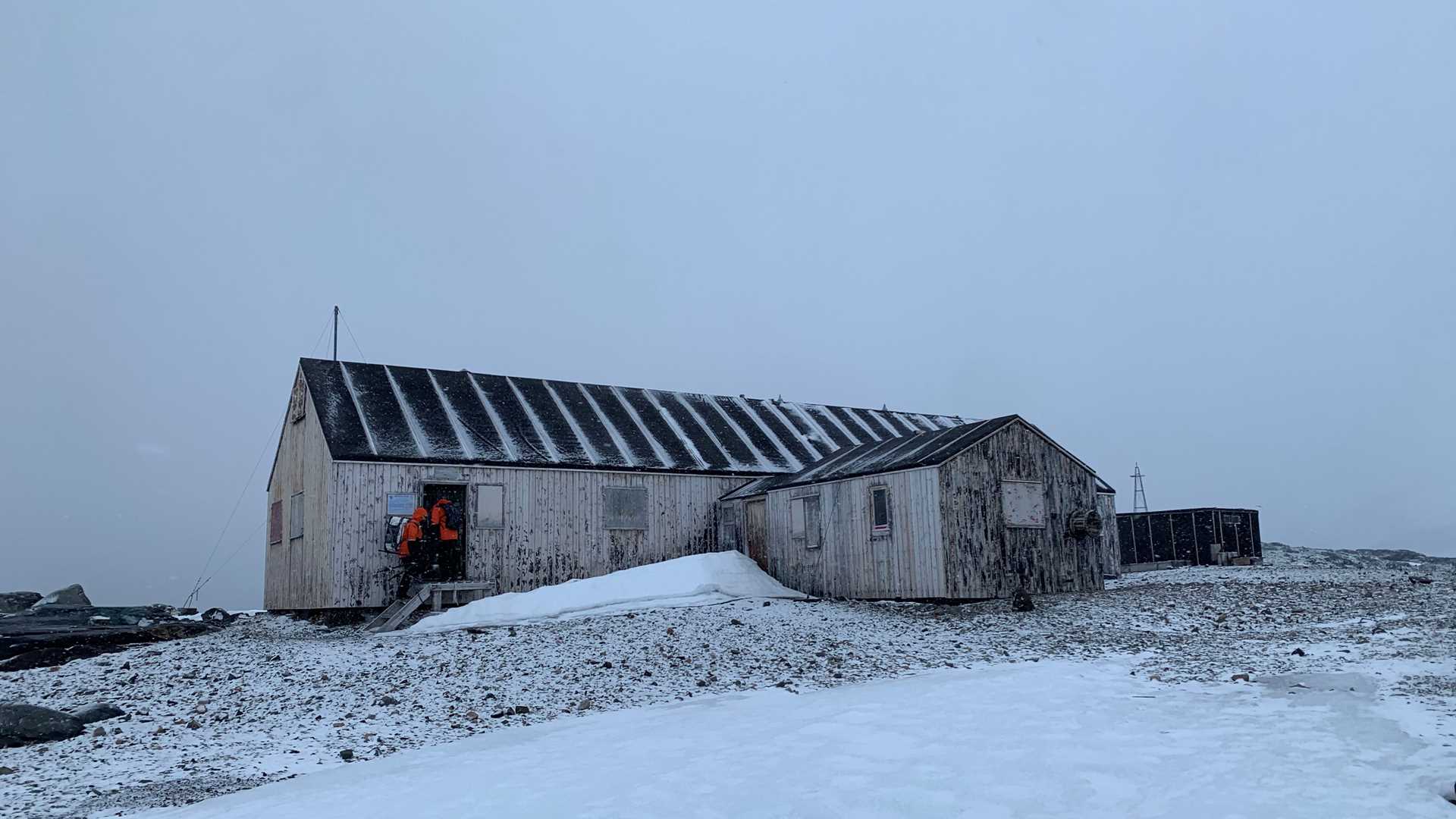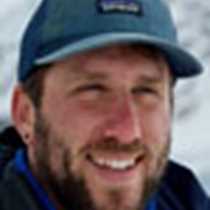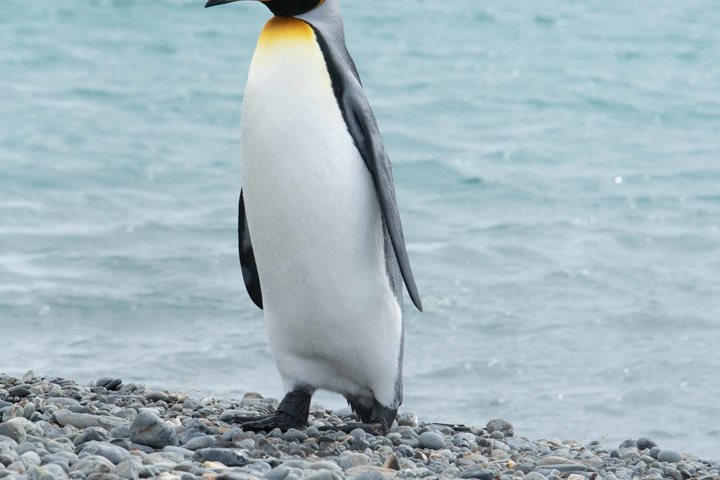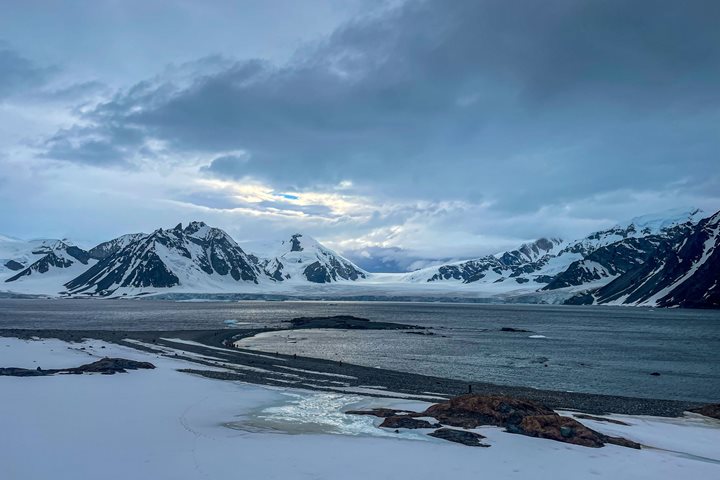We began our morning extra early in Marguerite Bay, well south of the Antarctic Circle. As we opened our Zodiac garage doors, we were greeted with gray skies and light snow falling with 20 knot winds. Boarding our Zodiacs, we traveled to Horseshoe Island. The British Graham Land Expedition (1934-1937) discovered and named this island, which is home to the historic site called Base Y.
Base Y was a scientific research hut established in 1955. It lasted until 1960 as a site for daily research on geology, meteorology and topographic surveys. The survey trips often covered hundreds of miles and lasted several months. Researchers used dog teams, sledges and occasionally, a biplane for longer distances. The building offered an incredible look into the lives of those who lived on the base only 70 years ago. A radio room, sledge workshop, bunkrooms, kitchen/living room and a diesel generator on display offered guests a full glimpse into their lifestyle. Outside Base Y, we observed nesting skuas, wandering Adelie penguins and Weddell seals scattered across the ice and beautiful rocks.
To finish the morning, we listened to a powerful presentation from Tyrone Tuner, National Geographic photographer, about his time in Louisiana after Hurricane Katrina. In the afternoon, we were treated to two more presentations. Adam Maire offered a detailed introduction to the explorers and discovery of the Antarctic continent. Afterward, Erin Britton spoke about penguins and their evolution all the way from the dinosaurs.
In the evening, we entered the Bellingshausen Sea as we continued our way south. Fabian Gottlieb von Bellingshausen was a Russian naval officer. He was captain of the First Russian Antarctic Expedition from 1819-1820. He led the first expedition to officially record a sighting of mainland Antarctica on January 26, 1820 at the coordinates of 69°21’28”S 2°14’50”W.
Onboard, we are very excited to continue heading south and reach areas where no expeditions have gone before.







